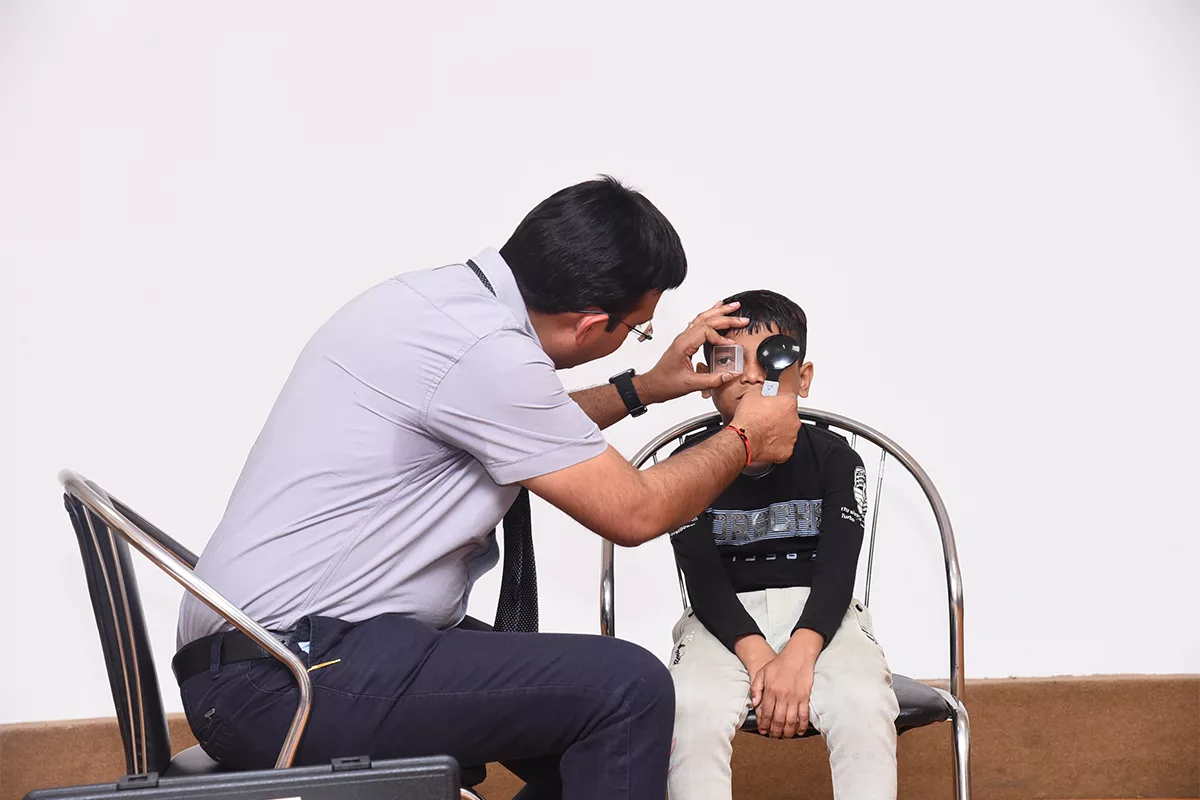Consultant Ophthalmologist and Vitreo-Retinal Surgeon, Dr. Muralidharan Upendran from Moorfields Eye Hospital Dubai shares an insightful read explaining what eye floaters really are and how you can treat them
Have you ever had tiny spots drift through your field of vision? These spots are not an optical illusion. You are really seeing them because they are in your eyes. These floating apparitions are most commonly known as Eye Floaters and in medical terms are called Myodesopsia.
Here’s everything that you need know about Eye Floaters and how to treat them:
What are floaters?
Floaters are spots in your vision that appear as dark specks or knobby, transparent strings of floating material or spots that move when you move your eyes, so when you try to look at them, they quickly move in and out of your visual field.
People describe eye floaters as spots, straight and curved lines, strings, or ‘O’ or ‘C’-shaped blobs.
Some people see a single floater while others may think they see hundreds. The lines may be thick or thin, and they sometimes appear to be branched. To most people, they appear grey and darker in colour than the background.
The density of different eye floaters will vary within an individual eye. Eye floaters may be more noticeable under certain lighting conditions and be more apparent when looking at a bright sky or any bright background or during near work. Floaters are rarely seen in situations with reduced illumination.
Like fingerprints, no two people have exactly identical patterns of eye floaters. If a person has eye floaters in both eyes, the pattern of the eye floaters in each eye will be different and its pattern may also change over time.
Do floaters affect vision?
In most cases, floaters are usually harmless and don’t significantly affect your vision. However, it’s important you have your eyes checked by an eye doctor or an optometrist trained in retinal examination as sometimes floaters can be a symptom of a more serious underlying problem.
Larger floaters can be distracting and may make activities involving high levels of concentration, such as reading or driving, difficult.
What causes floaters?
Floaters are small pieces of debris that float in the eye’s vitreous humour. In the majority of cases, they are thought to occur due to degenerative or age-related changes in the vitreous humour of the eye. Vitreous humour is a clear, jelly-like substance that fills the space in the middle of the eyeball.
The debris casts shadows onto the retina (the light-sensitive tissue lining the back of the eye). Floaters are the shadows that you see.
Floaters can’t be prevented because they’re part of the natural ageing process.
Diagnosing floaters
Tell your eye doctor if you think you may have floaters and answer questions about the symptoms – including how long you’ve had floaters; and your medical history – for example, whether you’ve previously injured your eye or had an eye surgery.
If a new floater suddenly appears or if there’s a rapid increase in the number of floaters you can see, consult an ophthalmologist.
In rare cases, floaters may be a sign of retinal tears or retinal detachment or inflammation or bleed. The ophthalmologist will check for this by examining the retina (the light-sensitive layer of cells lining the back of the eye) and the vitreous.
Treating floaters
In most cases, floaters don’t cause major problems and don’t require treatment. Eye drops or similar types of medication won’t make floaters disappear. After a while, your brain just learns to ignore floaters and you may not notice them.
If your retina has become detached, surgery is the only way to reattach it. Without surgery, a total loss of vision is almost certain. In 90 percent of cases, only one operation is needed to reattach the retina.
Monitoring your condition
If you have floaters, your eye doctor may ask you to return for a follow-up appointment a few weeks after your symptoms begin, to check that your retina is stable.
If your vision is unaffected and your floaters aren’t getting any worse, you may be advised to have an eye appointment every one to two years. However, if your symptoms worsen at any time, you should seek immediate advice from your eye doctor.
Vitrectomy
If your floaters don’t improve over time, or if they significantly affect your vision, a vitrectomy may be recommended. This is a surgical operation to remove the vitreous humour in your eye along with any floating debris and replace it with a saline (salty) solution.
However, vitrectomies for floaters are rarely carried out due to the potential risks associated with the surgery. Having said that, there have been significant advances in vitrectomy surgery over the last decade which have reduced the risks significantly.
Before having a vitrectomy, your eye will be numbed with a local anaesthetic. During the procedure, the vitreous humour will be removed from the vitreous body of your eye and replaced with saline solution. Sometimes a gas bubble may be used to fill the eye at the end of surgery. If a gas bubble is used then you must be prepared not to travel by air till the bubble disappears which is usually about two weeks.
As the vitreous humour is mostly made up of water, you won’t notice any difference to your vision after having a vitrectomy. However, possible complications may include retinal tears, retinal detachment, cataracts.
Laser treatment for floaters
Some clinics now offer treatment where a laser is aimed at floaters to break them up or move them towards the edge of your field of vision.
It’s thought to be a simpler and safer alternative to vitrectomy for persistent floaters. However, there hasn’t been much in-depth research into the treatment, and its safety and effectiveness is still uncertain. If you want to try laser treatment, make sure you know the risks and uncertainties before going ahead.
Prevention
Benign eye floaters cannot be prevented. They occur at all ages and most frequently for no apparent reason.
Because some floaters follow ocular injury, prevention of eye trauma is a wise strategy.
Some pathologic floaters like those that occur due to bleeding in diabetic eye disease can be prevented by regular examinations and control of blood sugar.
Highly myopic patients who are also at increased risk of retinal detachment should also have at least regular yearly eye examinations.
When to see a doctor
Noticing a few floaters from time to time is not a cause for concern. However, if you see a shower of floaters and spots, especially if they are accompanied by flashes of light, you should seek medical attention immediately from an eyecare professional.
The sudden appearance of these symptoms could mean that the vitreous is pulling away from your retina- a condition called posterior vitreous detachment. Or it could mean that the retina itself is becoming dislodged from the back of the eye’s inner lining, which contains blood, nutrients and oxygen vital to healthy function.
As the vitreous gel tugs on the delicate retina, it might cause a small tear or hole in it. When the retina is torn, vitreous can enter the opening and push the retina farther away from the inner lining of the back of the eye- leading to a retinal detachment.














